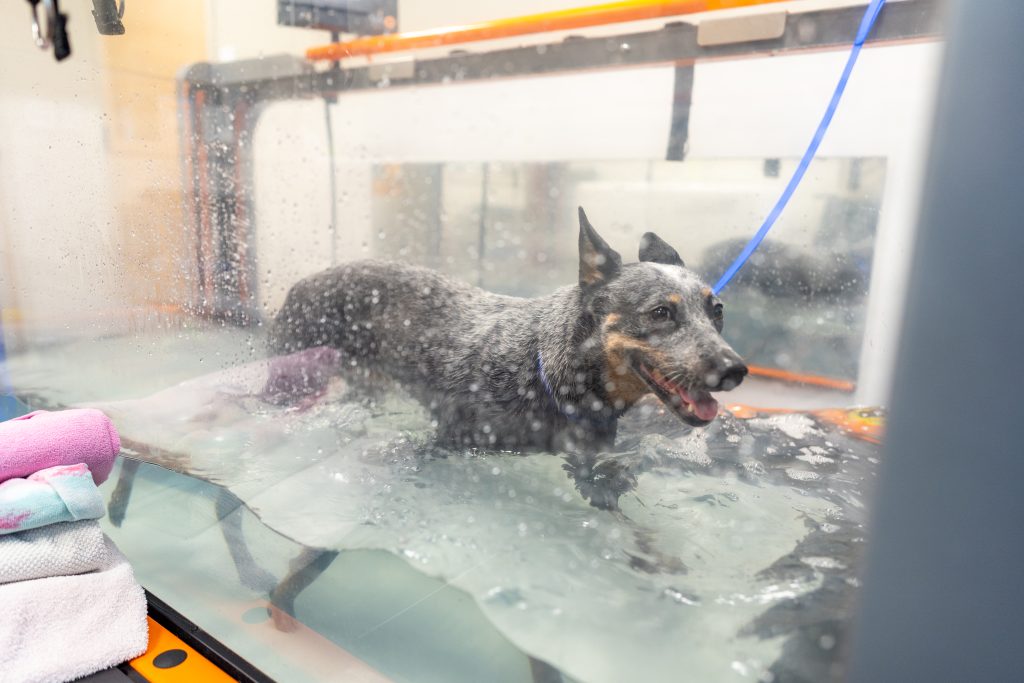Many people associate rehabilitation with acutely injured pets. However, many people don’t know that even healthy, uninjured pets can be helped with the addition of rehabilitation exercises and treatments.

Pet rehabilitation starts with a thorough assessment by a rehabilitation-trained veterinarian to identify sources of pain, dysfunction, and weakness. Our rehabilitation team is composed of veterinarians with additional training in rehabilitation (and other complementary skills like spinal manipulation, acupuncture, and herbal therapy), alongside highly trained rehabilitation therapists who provide treatments like underwater treadmill, therapeutic exercise, soft tissue mobilizations, and modalities like LASER. The entire team is dedicated to helping your pet improve. Below we answer a few of the most common questions we get.
Who can benefit from veterinary rehabilitation?
Quality of life and functionality are the main focuses for our pet rehab patients. This can be applied to critically injured patients, aging pets that need pain management, and those recovering from surgery or neurologic injury.
Various services offered in a rehabilitation hospital, such as soft tissue mobilization or therapeutic exercise, can also be applied to competition dogs—or even working dogs in the community!
What are common conditions that are treated during pet rehab?
Both acute and chronic neurologic and orthopedic conditions are frequently addressed during treatment. Some examples include hip dysplasia, degenerative myelopathy, and cranial cruciate disease. Other conditions that respond well to rehabilitation include arthritis, post-operative amputations, and competition injuries.
What are effective methods used for treatment?
There are many types of specialized pet rehabilitation equipment that are used for various conditions, such as:
- LASER technology
- Therapeutic ultrasound
- Underwater treadmill
- Extracorporeal shockwave therapy
- Acupuncture
- And more
However, a big factor people often overlook is the use of the veterinary team’s hands. Massages, therapeutic exercises, spinal manipulations, and stretching are all very effective in addressing your pet’s issues.
What if I have money and time constraints?
Veterinary rehabilitation often scares people off because they are under the impression that it is going to be very expensive. The reality is that it is usually much less than owners have built up in their minds. It is also important to keep in mind that preventative measures taken as part of the overall rehabilitation plan can reduce future necessary care—whether that be avoiding a future surgery, weaning off pain medication, or reducing the number of veterinary visits overall. These together save money in the long run. If time is a major factor, most rehabilitation veterinarians are happy to prescribe a home exercise program for you to do at home, or offer drop-off services to do the treatments themselves while you are at work.

How soon will I see a difference?
This is very case-dependent. In general, it takes about 2-3 weeks to start seeing the first changes in your pet. This doesn’t mean it will take that long for your pet to start improving, but as time goes on, you should see continuous improvements along the way. A more specific timeline will be given to you at your initial visit with the veterinarian.
Schedule your visit now with Veterinary Rehabilitation Care here, and let us help.